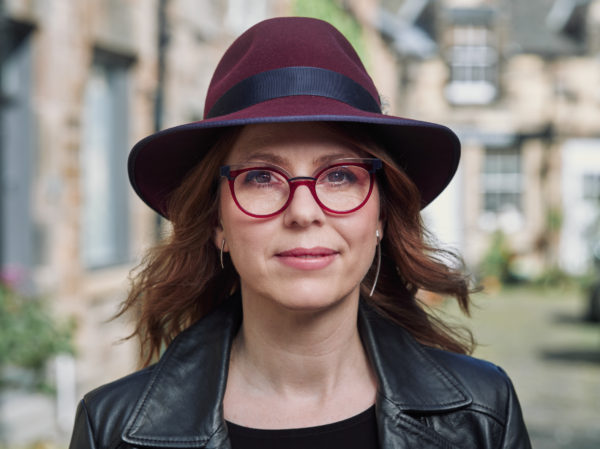Interview with Composer Anna Clyne

We had the pleasure of sitting down with acclaimed composer Anna Clyne to discuss her journey as a composer, her creative process, and her latest works. With an impressive portfolio of pieces commissioned and performed by some of the world's leading orchestras, Anna is recognized as one of the most exciting contemporary composers of our time. In this interview, she shares insights into her approach to music-making, her inspirations, and her thoughts on the role of music in society. Join us as we explore the fascinating world of Anna Clyne's music.
Anna, we are so excited to feature your composition DANCE at our May series. Can we start at the beginning? How did you get into music? And what led you to composing?
When I was seven years old, some friends of my family gave us a piano with some randomly missing keys in the upper register. As soon as I started playing the instrument, I also started to write little pieces – first for solo piano, and then soon after duets to play with my friends – all the while missing out the missing notes! In the way that I wrote music to play with my friends as a child, today I continue to be inspired by the musicians that I am writing for – especially for concerti with such wonderful soloists as cellist Inbal Segev, violinist Pekka Kuusisto, clarinetist Martin Fröst and saxophonist Jess Gillam. Playing music expanded to playing the cello a few years after receiving our first piano. My local school sent a letter to all parents offering group cello lessons. I clearly remember my Mum in the kitchen as she read out the letter and I replied with a resounding ‘yes’. The cello continues to be my primary instrument today, and the instrument that I connect with most deeply. I have wanted to write a cello concerto for many years due to this deep connection, so I was thrilled when conductor Marin Alsop introduced me to Inbal Segev who both commissioned and premiered my first cello concerto DANCE.
Your work DANCE is said to be inspired by your father and the poet Rumi. What should our audience listen for in the work?
DANCE is inspired by a short poem by the 13th Century poet and Sufi mystic Jalāl al-Dīn Muḥammad Rūmī. I was immediately drawn to this poem as although being very succinct, the words are potent and direct. It also has a very clear structure that implied a musical structure of five movements. Each line of the poem correlates to a movement in the concerto.
Dance, when you're broken open.
Dance, if you've torn the bandage off.
Dance in the middle of the fighting.
Dance in your blood.
Dance when you're perfectly free.
DANCE is dedicated to my father and the final movement, when you’re perfectly free, incorporates some modalities often associated with Jewish music, a nod to my father’s Jewish heritage. I knew that DANCE would be an important piece for me, and I wanted to dedicate it to my father as a gesture of love and gratitude.
Audiences will hear five contrasting movements that reflect the poem. Early on in my career as a composer, I wrote a lot of electroacoustic music – whereby I would record environmental sounds and then take them back to the studio and cut them up, process them electronically and then reassemble them in layers. This layering process translated very organically to the orchestra - so in this piece, DANCE, you’ll often hear me layering sounds. For example, in the opening movement, when you’re broken open, the cello is playing very high in the register so to add some support to that line, I double it with flute and bowed vibraphone so that the sound can blossom and carry more easily. You will also hear some more unusual percussion instruments, such as a wind machine in the fourth movement, in your blood.
You enjoy exploring the connection between visual arts and music, such as with Color Field, which was inspired by the artwork of Mark Rothko. What would be your dream art/music collaboration?
I am often inspired by artists from other fields – be they visual artists, filmmakers or choreographers. My dream art/music collaboration is a large-scale opera, which will be an exciting new chapter in my musical life. I love that so many elements, including art design, weave together to create a more substantial whole – a deep artistic collaboration.
I would also be very interested in creating immersive music for an artist such as the Icelandic–Danish artist Olafur Eliasson. Recently, I have been developing the Augmented Orchestra in collaboration with audio engineer Jody Elff. This entails the live electronic processing of the acoustic orchestra to expand the sound world in a seamless and integrated process. This has great potential to expand the orchestra into new environments and it would be very interesting to collaborate with an artist who specializes in light and space movement such as the American artist James Turrell.
You can hear DANCE at our 2023 Season Finale concert on May 6th and 8th GET TICKETS
